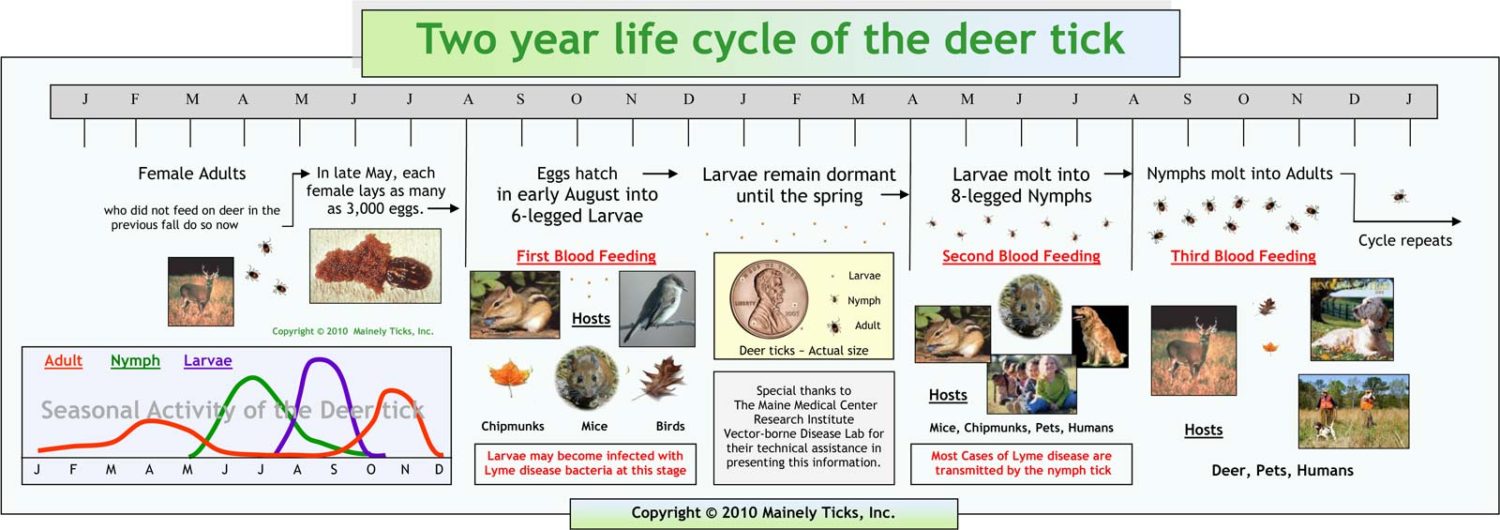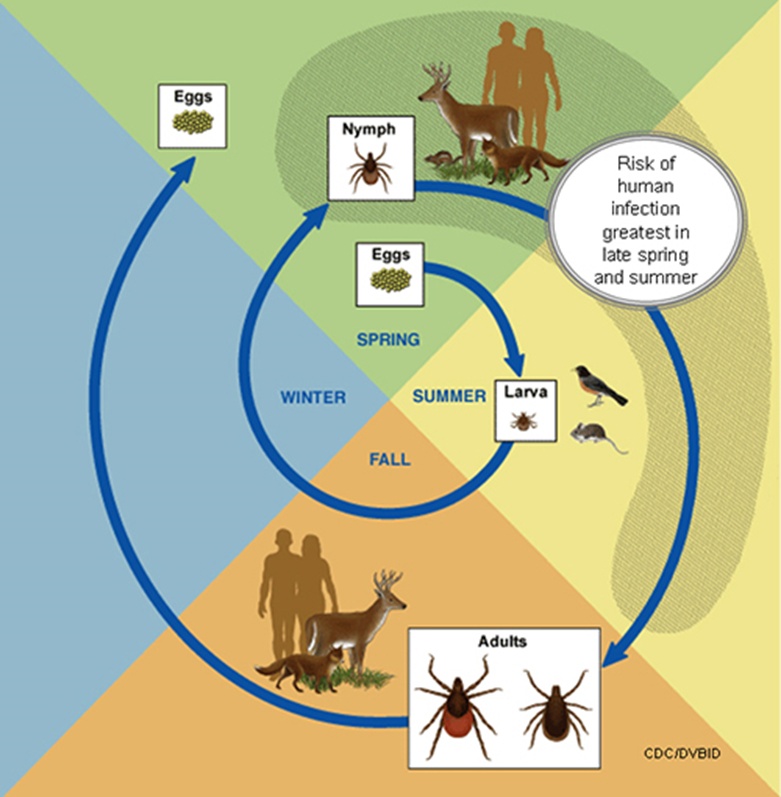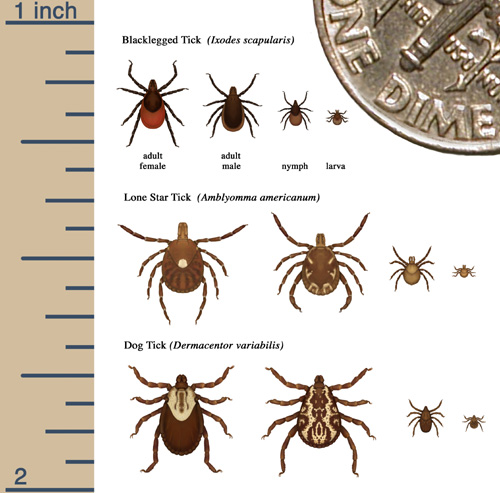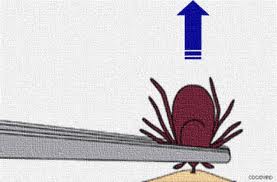Ticks can harbor:
- Lyme disease bacteria (Borrelia burgdorferi), from Ixodes species including deer ticks (Ixodes scapularis)
- Less common:
- Babesiosis protozoa (Babesia), from Ixodes scapularis
- Ehrlichiosis bacteria (Ehrlichia chaffeensis and Ehrlichia ewingii bacterial), from Lone Star ticks (Amblyomma americanum), as well as Making People Allergic To Meat
- Rocky Mountain Spotted Fever: Anaplasmosis bacteria (Rickettsia rickettsii), from Ixodes species [the American dog tick (Dermacentor variabilis), Rocky Mountain wood tick (Dermacentor andersoni), and brown dog tick (Rhipicephalus sanguineus)]
- Powassan
- Southern tick-associated rash illness (STARI), infectious agent not yet identified by the U.S. Centers for Disease Control and Prevention (CDC), from Amblyomma americanum or Lone Star tick
- Newly discovered in Kentucky (also spread by mosquitoes): Bourbon virus
- Newly Discovered in Missouri(phleboviruses, also spread by sand flies, mosquitoes): Heartland virus
Tick Species Identification Comparison Images
Common Reservoirs or vectors in the north east: white-footed mouse (Peromyscus leucopus Rafinesque), microtus voles (Microtus spp.), white-tailed deer (Odocoileus virginianus), outdoor dogs and cats

After a tick bite, individuals may develop any of these symptoms:
- flu-like symptoms
- fever
- rash
- pain and swelling in joints
- nausea and vomiting
- NOT everyone will see a bulls eye or rash after a bite
If you exhibit any of these symptoms go see a doctor! These doctors are probably best: Lyme-Literate Doctors | LLMD search
Most tick bites are probably harmless and may cause no problems. The earlier a tick is removed, the less the likelihood that the tick transmitted any disease. If there isn’t any immediate skin rash reaction to a tick bite and if the tick is removed quickly, most individuals recover quickly.
Protection from ticks
- Don’t rely on DEET alone, permethrin is more effective against ticks, but neither guarantee you won’t contract any tick-borne diseases
- Do NOT spray your skin with Permethrin, but do spray clothing. Permethrin infused clothing by Insect Shield or other brands lasts longer than spays. Ticks need to travel across at least 6-8″ of treated area before death occurs.
- Do NOT use Deet on children.
- Wear light color clothing so ticks are easier to spot
- Ticks are active at 40 degrees or above
- Check after EVERY trail event
- Deer ticks will hang on grass or plants along the edge of the trail to grab whatever passes by
- Lone Star ticks, sometimes called Chiggers, can track you down from up to 30 feet away and will make a bee-line to when stopped
- Ladies nylons can help with Lone Star. Gaiters can help with runs.
- If removed within 36 hours you are less likely to contract diseases
- Do not smother or burn ticks
- Use tweezers to pull where it is attached to your skin
- Save the tick in a bag to save in case your doctor wants it
- Lone Star ticks will usually leave an itchy red dot
- See tick encounter, and project lyme
 larvae, nymph, adult male, adult female
larvae, nymph, adult male, adult female



Pingback: Lyme Disease Diagnosis – Trailism